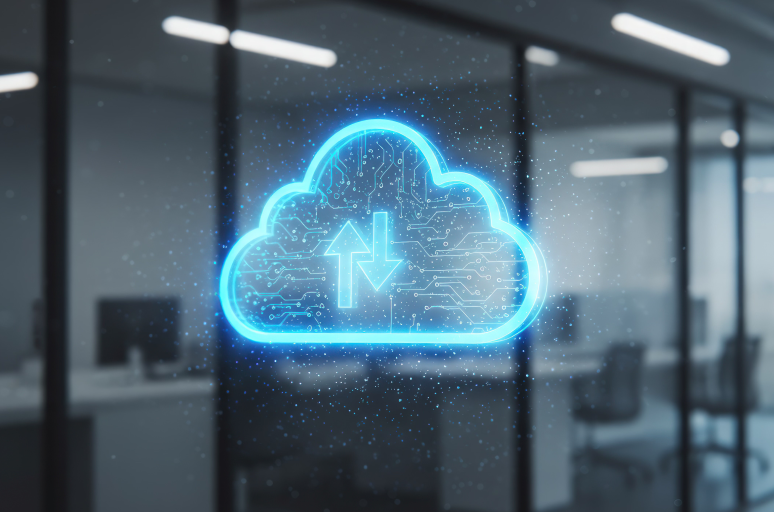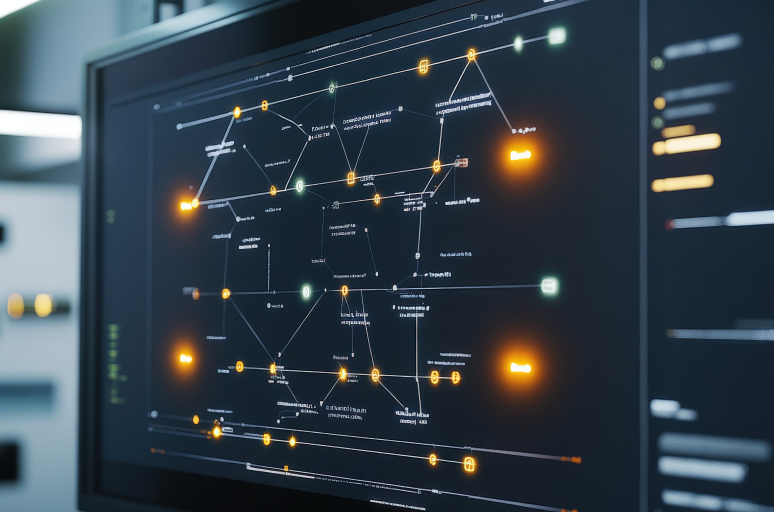How do high performers approach application modernization? Can organizations maintain day-to-day business operations while changing the technical foundation of outdated systems? The answer often lies in their ability to maintain business continuity while rebuilding the technology foundation of outdated systems.
Many companies discover this balance through careful planning and phased implementation approaches. An effective application modernization strategy converts these challenges into competitive strengths by systematically upgrading infrastructure and reworking system architecture.
What is application modernization
Application modernization process aims at restructuring existing software systems to leverage current development practices, technologies, and architectures. This process goes well past software upgrades. Going a way deeper than simple software updates, this approach involves fundamentally rethinking how applications create business value through cloud-native capabilities, microservices architecture, and automated deployment workflows. Application modernization approach removes technical barriers that limit business expansion and reduce their ability to innovate effectively.
Several market forces create urgent pressure for modernization. Digital native and AI-first companies are winning customers by offering better experiences through their cutting-edge tech infrastructure. Legacy platforms often fall short of meeting these expectations.
At the same time, updated compliance standards require stronger security protocols and better data management practices that are difficult to implement in older systems. Moreover, technical debt accumulates when organizations postpone essential system upgrades and architectural enhancements. This debt manifests as escalating maintenance expenses – legacy systems maintenance requires unique skills and can consume up to 80% of IT budgets – while generating diminished business value.
Developer efficiency suffers as teams waste time navigating system limitations rather than creating new functionality. Security vulnerabilities expand when vendors discontinue support for aging platforms, exposing organizations to cyber threats. McKinsey research indicates that companies carrying substantial technical debt deploy features more slowly and pay up to 20% more to address tech debt, than organizations with modern architectures.
Digital transformation outcomes depend heavily on successful modernization initiatives, since updated systems enable enhanced customer experiences through quicker response times and tailored interactions.
Core components of an effective application modernization framework
Creating a strong application modernization strategy requires careful evaluation of existing systems along with thoughtful planning for future architectures. Organizations need to balance technical needs with business goals while managing risks during the transformation.
Legacy system assessment and dependency mapping
Understanding your current situation forms the foundation of any modernization effort by documenting what systems can do, their limitations, and how they connect. Technical reviews examine code quality, infrastructure dependencies, and integration points to figure out modernization priorities. A financial services company might find that their main banking system connects to numerous different applications through direct integrations, creating a complicated network that needs careful planning to untangle. Business process reviews map how current systems support daily operations, showing opportunities to improve processes alongside technical upgrades.
Migration pattern selection for different application types
Different applications need specific modernization approaches based on their features and business importance. Several migration patterns work for particular situations:
- Rehost (lift-and-shift). Moves applications to cloud infrastructure without changing code. For instance, a manufacturing company might move their inventory system to AWS to get immediate infrastructure benefits while planning deeper changes later.
- Refactor. Improves existing code for cloud environments without changing core functions. For example, an online retailer could refactor their single-block application to use cloud services like managed databases and caching systems.
- Rebuild. Recreates applications using current architectures and technologies. A healthcare provider might rebuild their patient portal as a microservices-based system to enable faster feature development.
- Replace. Swaps custom applications with commercial solutions. For example, organizations often replace homegrown CRM systems with platforms like Salesforce to benefit from continuous vendor improvements.
These patterns offer structured methods for different application modernization strategies. The choice depends on technical debt levels, business value, and available resources. Organizations typically use multiple patterns across their application collection to get the best results.
Architecture design principles
Today's app modernization architecture design centers on building systems that can grow, change, and stay maintainable using established approaches. Microservices break large applications into smaller, independent services that teams can deploy separately. This means developers can update one component without bringing down the entire system. When you design APIs first, you create consistent ways for services to communicate with each other. This approach also makes it much easier to integrate with business partners or build mobile applications later.
Planning how data flows between services requires careful thought. Event-driven patterns help systems process information in real time while keeping data synchronized across multiple distributed components. Rather than adding security features after building your system, smart organizations build protection directly into their architecture from day one. This includes encrypting data both when stored and transmitted, connecting with identity management systems, and running automated security checks throughout development.
Technology stack selection
The technology foundation you pick will directly affect both how well your modernization works and how much it costs to maintain going forward. Most companies compare three major cloud providers – AWS, Google Cloud, and Azure – based on what their specific project needs.
Development teams go through similar decisions when picking their core tools and frameworks. Your choice of programming languages, development frameworks, and DevOps platforms should match what your team already knows while meeting what the industry expects today. Take a fintech startup building payment systems - they might choose e.g. Node.js for handling API requests, React for building user interfaces, and Kubernetes for managing their containerized applications across different environments.
How well your chosen platforms connect with current systems and external services often determines implementation success. This integration assessment reveals potential bottlenecks early, helping teams avoid costly surprises during development. When different systems can communicate effectively, development moves faster and maintenance becomes more straightforward.
Smart vendor evaluation looks at the complete picture rather than just technical specifications. Financial health of the vendor matters because you want partners who will support your technology choices for years to come. Support quality varies significantly between providers, and understanding their long-term product direction helps ensure your investment remains viable as business needs evolve.
Risk mitigation strategies during transition phases
Modernization projects create risks that need active management throughout the transformation process. Data protection strategies use comprehensive backup procedures, encryption standards, and access controls to prevent information loss or exposure during migrations. Business continuity planning keeps critical operations running even if modernization activities hit problems – this might include running parallel systems during transition periods or implementing gradual rollout strategies. Rollback procedures provide safety nets by documenting steps to reverse changes if issues come up. A retail company updating their e-commerce platform might keep the old system in read-only mode for 30 days after migration, allowing quick restoration if serious problems appear.
Application modernization roadmap development
Strategic roadmap development turns high-level modernization goals into actionable implementation plans. Effective roadmaps balance quick wins with long-term transformation goals while keeping operations stable throughout the transition.
Phase-based implementation strategy
Companies find that breaking modernization work into distinct phases helps them control risk while showing concrete results through step-by-step improvements. The secret is spotting quick wins, i.e. projects creating significant business value without unnecessary complications. These early wins generate momentum and convince stakeholders to support bigger, more ambitious projects down the road.
Effective prioritization moves the entire application modernization roadmap ahead. The simplest way to achieve this is to order your work around three essential criteria:
- how much the project affects business outcomes,
- what technical requirements must come first, and
- which teams and budgets are ready to execute.
Most companies start with customer-facing applications because these upgrades directly boost their competitive position in the market. Internal systems matter too, but they typically get attention in later phases.
Running several modernization projects at the same time speeds up the whole transformation when technical requirements allow for it. Consider this example: teams can upgrade databases while others work on modernizing the API layer, as long as these efforts do not create conflicts or dependencies. This approach delivers faster overall progress without putting too much pressure on any particular team or system component.
Resource allocation and timeline planning
Smart resource planning makes sure you have adequate expertise and capacity throughout modernization projects. Team composition needs to vary by project phase. For instance, initial assessments need business analysts and architects. Later implementation phases require developers, QA specialists, and DevOps engineers. Skill gap analysis identifies training needs or external expertise requirements, particularly for cloud-native technologies and current development practices. Vendor selection criteria establish frameworks for evaluating external partners based on technical abilities, industry experience, and cultural fit. Timeline planning must account for learning curves, unexpected complications, and business cycle constraints that affect resource availability.
Budget estimation and cost optimization techniques
Complete budget planning covers multiple cost categories across the modernization lifecycle. The following components need careful estimation:
- development costs – include internal labor, contractor fees, and productivity impacts during transition,
- infrastructure expenses – cover cloud services, licensing fees, and temporary duplicate environments,
- training investments – fund skill development programs and certification courses,
- opportunity costs – account for delayed feature development while teams focus on modernization,
- contingency reserves – provide buffers for unexpected complications or scope adjustments.
Common modernization challenges and solutions
Understanding predictable challenges within your app modernization strategy allows proactive planning and reduces project risks.
Legacy system dependencies and integration issues
Older systems rarely work alone – they connect to many other applications through various integration patterns developed over decades. Dependency resolution starts with thorough mapping exercises that document all system connections, data flows, and shared components. Integration patterns must evolve from point-to-point connections to current approaches like event streaming and API gateways. A banking institution might implement Apache Kafka to disconnect their core banking system from downstream applications, allowing independent modernization of each component.
Data synchronization challenges arise when maintaining consistency between legacy and updated systems operating in parallel. Using change data capture (CDC) tools enables real-time synchronization without modifying legacy applications. Compatibility management addresses version mismatches and protocol differences through adapter patterns and protocol translation layers.
Scope creep and feature expansion challenges
Modernization projects attract additional requirements as stakeholders see transformation opportunities. Requirements management processes must distinguish between essential modernization objectives and feature improvements that should be postponed. Change control processes evaluate proposed modifications based on their impact on timelines, budgets, and technical complexity.
Adding new reporting capabilities during a database migration might seem logical but could significantly extend project timelines. Stakeholder expectation management requires regular communication about project boundaries and the reasoning for deferring certain requests. Creating a future enhancement backlog captures valuable ideas without expanding current project scope.
Skills gap and organizational resistance
Technical transformations require corresponding organizational changes that often face resistance. Training programs must address both technical skills and cultural shifts toward current development practices. A pharmaceutical company moving to DevOps might implement a multi-tier training program – foundational courses for all IT staff, specialized training for key roles, and ongoing coaching during initial implementations.
Change management strategies recognize that resistance often comes from fear of job displacement or loss of expertise value. Showing how modernization creates new opportunities for professional growth helps overcome these concerns. Team restructuring might involve creating new roles like site reliability engineers while evolving traditional positions. External expertise fills critical gaps through contractors, consultants, or managed service providers while internal capabilities develop.
Application modernization process execution
Running modernization projects demands strong project management skills paired with solid technical know-how. Moving data stands out as the riskiest part of any application modernization framework, because organizational information is so valuable.
ETL (Extract, Transform, Load) processes need to manage data format changes, schema updates, and business rule implementation while keeping everything accurate. Today's migration tools such as AWS Database Migration Service handle much of the heavy lifting automatically. Teams verify data accuracy through several methods - counting rows, comparing checksums, and testing business rules to confirm everything transferred correctly. Planning for rollbacks gets tricky because data keeps changing after migration starts, which might mean replaying transaction logs or setting up incremental sync processes.
Quality assurance for modernized applications goes far beyond standard testing methods to handle new architectural approaches and deployment strategies. Automated testing becomes absolutely necessary when dealing with microservices architectures, since manual testing simply cannot match the pace of frequent deployments.
The benefits of modernization reach much further than just initial cost reductions and better performance. But even the most technically successful project fails without proper user adoption of the updated systems. User-facing and internal communication strategies should focus on benefits rather than technical specifications showing how the updated systems make daily work easier and more efficient.
Partner with us for your modernization initiative
RST brings proven expertise in guiding organizations in developing their own application modernization strategy. Our approach combines technical excellence with business understanding to deliver measurable results. We offer strategic consultation services to prepare a successful modernization roadmap. Contact us today to discuss how our application modernization strategy can accelerate your digital transformation.







